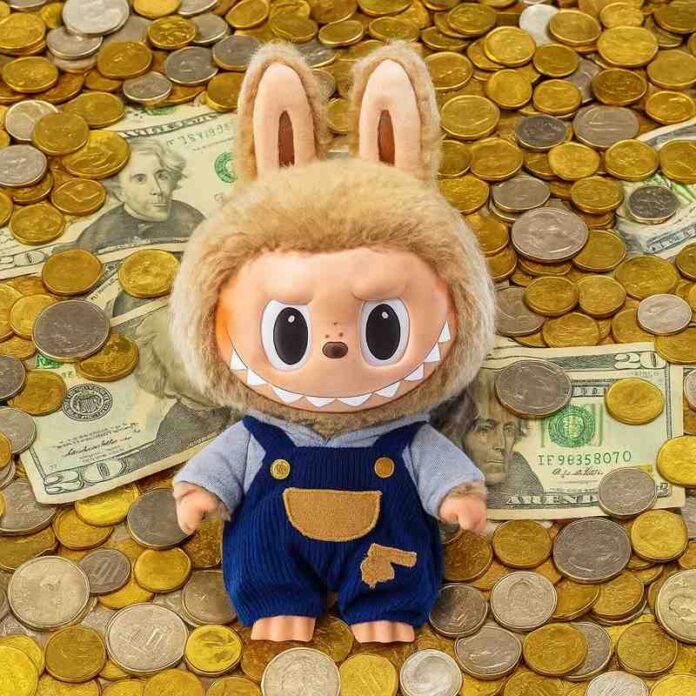Some crazes arrive with a whisper; others roar in with fangs. Few toys in recent history have caused as much frenzy, speculation, and outright mania as Labubu, the furry, snaggle-toothed monster born from the imagination of Hong Kong illustrator Kasing Lung. In less than a decade, Labubu went from a sketch in a storybook to a multi-billion-dollar phenomenon with lines of fans stretching around shopping malls from Shanghai to Bangkok.
But just as quickly as the monster climbed to cult status, questions are now swirling about whether the FOMO (fear of missing out) around Labubu is finally beginning to fade.
Humble Origins: From Sketch to Shelf
Labubu’s story begins in 2015 when Lung introduced the character in his illustrated book series The Monsters. Inspired by a blend of Nordic folklore and childlike imagination, Labubu was mischievous, a little creepy, and somehow still endearing. With its sharp grin and exaggerated ears, it looked nothing like the polished teddy bears of old.
For a few years, Labubu lived in relative obscurity. Collectors in Hong Kong and a few design circles admired Lung’s art, but the monster had not yet broken into the mainstream. That changed when Pop Mart, the Chinese toy giant, spotted Labubu’s potential.
Pop Mart’s Blind Box Magic
Pop Mart specializes in “blind box” culture: toys sold in sealed packaging so buyers never know exactly which version they’ll get. It’s part gamble, part thrill — and all psychology. In 2019, Pop Mart partnered with Lung and unleashed Labubu into its blind-box empire.
The results were explosive. The element of surprise, combined with the quirky design, created instant buzz. Collectors wanted to complete sets, resellers sniffed profit margins, and ordinary shoppers felt compelled to join the hunt. The toy world had seen fads before — Beanie Babies, Tickle Me Elmo, Funko Pops — but Labubu was about to become something else entirely.
The Viral Spark: Celebrities and Social Media
The real ignition point came when celebrities were spotted with Labubus. A K-pop idol with a Labubu keychain was enough to send fans scrambling. Influencers flaunted them online, and TikTok filled with “unboxings” where fans tore into blind boxes hoping for rare editions.
In Thailand, Labubu even took on a spiritual twist, with some buyers treating the plush dolls as good-luck charms. This wasn’t just a toy anymore; it was a cultural moment, a lifestyle accessory, and in some cases, a talisman.
Social media amplified the hype into overdrive. Videos of shopping mall stampedes and overnight queues outside Pop Mart stores went viral. Suddenly, everyone from teenagers to middle-aged professionals wanted their own Labubu — not necessarily because they loved the toy, but because they didn’t want to be left out.
Exaggerated Success: Money Monsters
By 2024 and into 2025, Pop Mart’s financials told the story. Profits multiplied several times over, driven largely by the Labubu line. Plans for hundreds of stores worldwide were unveiled. At auctions, limited-edition Labubus fetched jaw-dropping sums — one mega plush sold for nearly $170,000.
Speculation added fuel. Secondary markets on eBay and regional platforms saw Labubus listed at many times their retail price. For a moment, Labubu wasn’t just a toy — it was an asset class, a fuzzy investment in the same spirit as sneakers or NFTs.
Investors and journalists alike started comparing Pop Mart’s rise to the kind of bubble economics seen in collectibles before. Labubu had become not just a product but a market mover.
The Cultural Twist: Ugly-Cute as Identity
Part of Labubu’s allure was how unlike traditional toys it was. Its sharp grin, bulging eyes, and ragged fur placed it in the realm of “ugly-cute.” In a digital era of memes and viral absurdity, Labubu resonated as the perfect mascot for online culture: ironic, weird, and self-aware.
Commentators even joked that Labubu was the “plush version of the internet” — a mash-up of nostalgia, chaos, and consumer obsession. When military pilots and office workers alike were photographed with Labubu dolls, the creature had officially crossed from subculture to mainstream.
The Cracks Appear: FOMO Fatigue
But no craze lasts forever. By mid-2025, warning signs emerged. Reports of fights in stores and burglaries targeting Labubu stock created negative headlines. Authorities in the U.S. and Europe flagged safety concerns around counterfeit versions flooding markets. In the U.K., some retailers temporarily suspended sales after crowds grew unmanageable.
At the same time, analysts began asking a tough question: how long can a plush monster sustain exponential growth? Pop Mart tried to extend the wave with new variants — “long-fur” editions, vinyl pendants, special seasonal costumes — but the very act of multiplying versions threatened to dilute the rarity that made Labubu valuable in the first place.
For many fans, the thrill of chasing a Labubu started to feel more like a chore. The lines were too long, the prices too inflated, and the magic too commercialized.
From Icon to Afterglow
Labubu’s story is both a tale of genius marketing and a cautionary parable about modern FOMO. It shows how fast culture can amplify a niche idea into a global craze, but also how quickly consumers burn out when hype is stretched too far.
Will Labubu endure like Hello Kitty, becoming a long-term cultural mascot? Or will it fade like Beanie Babies, remembered fondly but with a tinge of embarrassment at how seriously people took the craze?
For now, the monster still grins, perched on shelves, in TikTok feeds, and in the arms of collectors. But the first signs of fatigue suggest that we may be nearing the twilight of Labubu’s peak.
Final Thoughts: Lessons from a Plush Phenomenon
The Labubu craze teaches us a few things:
-
Virality is unpredictable. One celebrity photo or viral video can trigger a storm.
-
Scarcity drives demand. The blind-box model turned toys into treasures.
-
FOMO has limits. Eventually, buyers ask if the price — financial and emotional — is worth it.
-
Culture shapes products. Labubu’s weird aesthetic matched perfectly with the internet’s taste for the absurd.
Whether Labubu remains a billion-dollar juggernaut or becomes another entry in the museum of fads, its impact is undeniable. For a brief, brilliant window, a mischievous little monster held the world’s attention, wallets, and imaginations — and maybe that’s the greatest trick of all.





